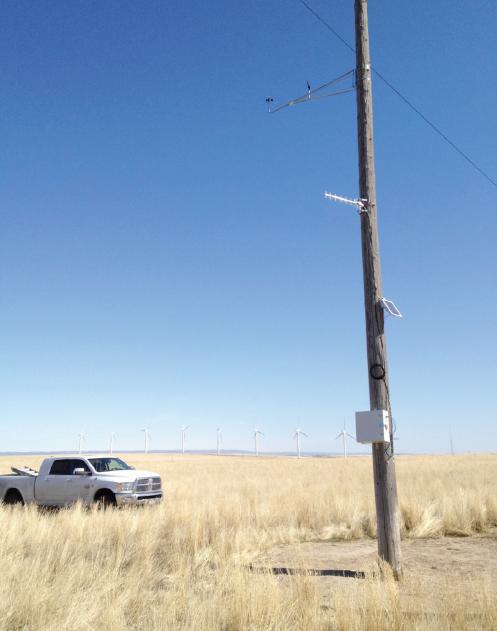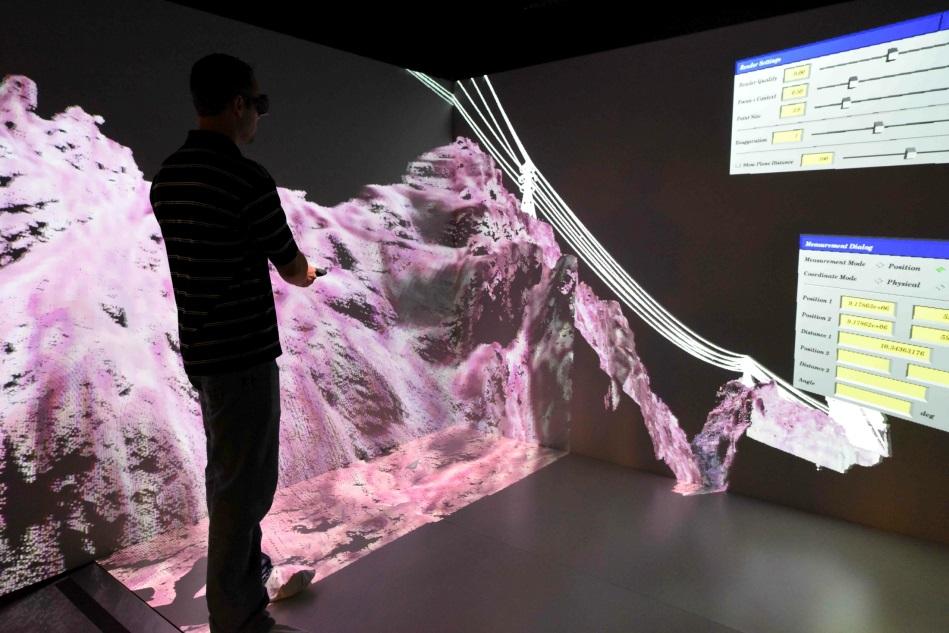Leveraging weather conditions could help utilities deliver electricity faster, cheaper and safer.
Donna Rennemo, WindSim , windsim.com
Research has shown that knowing the weather conditions and the impact on electrical power lines can increase transmission capacity limits by 10 to 40%. This includes key weather components such as air temperature and solar radiation, but also wind speed and direction. An accurate forecast of both weather and conditions affecting power lines can boost delivery of electrical power by utilities.
Some 500 power companies deliver electrical power through a complex network of more than 160,000 miles of high-voltage transmission lines in the U.S. known as “the grid.” Largely unchanged for decades, ‘the grid’ needs to expand and modernize in order to accommodate new power plants and the addition of renewable-energy projects to meet electrical load growth and diversified energy mix. Being able to use existing transmission lines to their safe capacity is important before deciding on whether or not to construct new lines. This can make or break plans for new wind or solar farms with significant additional costs.
Wind power researchers at the U.S. Department of Energy’s (DOE’s) Idaho National Laboratory (INL) believe moving more electricity through existing transmission lines is both possible and practical. Specifically, where wind farms are being developed, there is potential to take advantage of wind cooling on existing transmission lines and enabling added wind-power generation with minimal integration costs. Identifying additional capacity can be done by monitoring weather conditions, while considering both line sag and ensuring proper clearance requirements are met. The key is to pay close attention to the weather.

Idaho National Laboratory researchers and Idaho Power have installed more than 40 weather stations along four transmission lines in a windy part of southern Idaho’s interstate utility corridor. Forecasting weather and line conditions offers the potential of delivering more power reliably and efficiently.
“At INL, our research indicates that increased line capabilities are achieved through dynamic line ratings without violating regulatory and safety standards or impacting network reliability, if conditions are monitored and properly leveraged,” said Jake Gentle, INL wind power researcher.
“Under the right conditions, an increase in wind speed blowing at a right angle to a high-voltage line can cool the line enough to safely increase the amount of current it can carry by 10 to 40 percent,” he added.
INL researchers have been funded by DOE’s Office of Energy Efficiency and Renewable Energy’s Wind Program. INL researchers collaborate with several industry and university partners, including Idaho Power Company in researching efficiency gains in southern Idaho test areas. The Idaho Power Company supports the research and development project with their own internal funding, in-kind engineering support, physical assets, and access to the more than 450 line miles of high voltage transmission lines, substations, and communication infrastructure.
Concurrent cooling project area
The amount of line cooling from environmental conditions varies with the wind’s speed, its direction relative to the line, local ambient air temperature, and solar radiation exposure. To better understand this concept, researchers are collaborating with several regional and national entities to study a windy part of southern Idaho’s complex terrain and interstate utility transmission corridor. Together, they translate detailed weather, line loading, and conductor temperature information into dynamic line ratings, which are real-time estimates of how much current each segment of high-voltage line can safely carry at the same time wind power is generated.

The 3D Computer Assisted Virtual Environment (CAVE) allows visualizing LiDAR scans of overhead transmission lines in complex terrain.
Currently, power utilities operate transmission lines based on static ratings, which uses a conservative limit on the amount of electrical current the lines can safely carry without violating clearance requirements and overheating the line. Static ratings assume there’s little or no wind blowing, so in moderately windy places, a line’s static rating is often much lower than its real transmission capacity. Those windy places, synergistic with wind power farms, are called ‘concurrent cooling areas’ because the wind that generates power also cools transmission lines. Using dynamic line ratings to manage capacity on high-voltage lines in such places helps increase the overall efficiency of power transmission.
Concurrent cooling model
Researchers at INL and Idaho Power are installing more than 40 weather stations along 450 miles of transmission lines in a windy part of southern Idaho. These researchers are specifically targeting two lines at 230 kilovolt (kV) and two lines at 138 kV, with additional 345 kV and 500 kV lines within the 2,400 square mile project area.
With data from the weather stations, researchers also use sophisticated computational fluid dynamics software (CFD) to analyze airflow and fill in the environmental gaps. This expands the measurement points into full coverage of the line sections or physical conductor spans between the real-time weather stations.
The research team started with the CFD program, WindSim, which meteorologists and wind-power developers typically use to model wind flow over complex terrain. They modified the software and added new data processing capabilities to boost the simulation speed and increase the area coverage. In WindSim, it is now possible to import infrastructure data information on transmission lines and combine it with the wind information needed to calculate the cooling along every span of the line.
INL researchers also developed a new tool called INL’s ‘General Line Ampacity State Solver’, or GLASS. It takes CFD model results and estimates how much the wind flow affects a power line’s real transmission capacity. This helps determine the relationship between wind-energy generation and resulting concurrent cooling of the transmission lines carrying that wind power to homes and businesses.
Improved line capacity forecasting
While continuing to validate its approach, INL researchers are working to refine the CFD models and dynamic line rating methodology to run faster and generate more accurate results for complex terrain. The team also works with utilities and their engineers to train system operators in the use of weather station data and software tools to generate transmission capacity operating limits. The ability to reliably make such estimates on a large scale with high spatial resolution advances power utilities a step closer to using a transmission system dynamically coupled with concurrent cooling processes. The results are a responsive power delivery system that is safer, faster and more economical to operate.
Idaho National Laboratory
INL is part of the DOE’s consortium of national laboratories. DOE’s national laboratories possess unique instruments and facilities and address large scale, complex research and development challenges with an approach that emphasizes translating basic science to innovation. INL performs work in each of the strategic goal areas of DOE: energy, national security, science and environment, and is the nation’s leading center for nuclear energy research and development. Day-to-day management and operation of the laboratory is the responsibility of Battelle Energy Alliance.
WindSim AS pioneered the use of CFD (Computational Fluid Dynamics) technology used to optimize wind turbine placement, wind performance, and bankable AEP (Annual Energy Production), and offers CFD software, training, independent technical and engineering services to the wind industry. Headquartered in Norway, WindSim has a global presence in over 50 countries.
More detail regarding this program:
http://www.windsim.com/documentation/UM_Americas_2014/05-WindSim_Americas_Annual_Meeting_2014_INL_Gentle.pdf
Other contributors to this article include:
Jake P. Gentle / INL Project Manager / (208) 526-1753 jake.gentle@inl.gov
Christopher Wright / INL Department Manager / (208) 526-3075 christopher.wright@inl.gov
Charlton Clark / DOE Technology Manager / (202) 586-8040 charlton.clark@ee.doe.gov
Catherine Meissner, Ph.D. / WindSim Software Development Manager / +47 41599363 catherine.meissner@windsim.com
Filed Under: News







